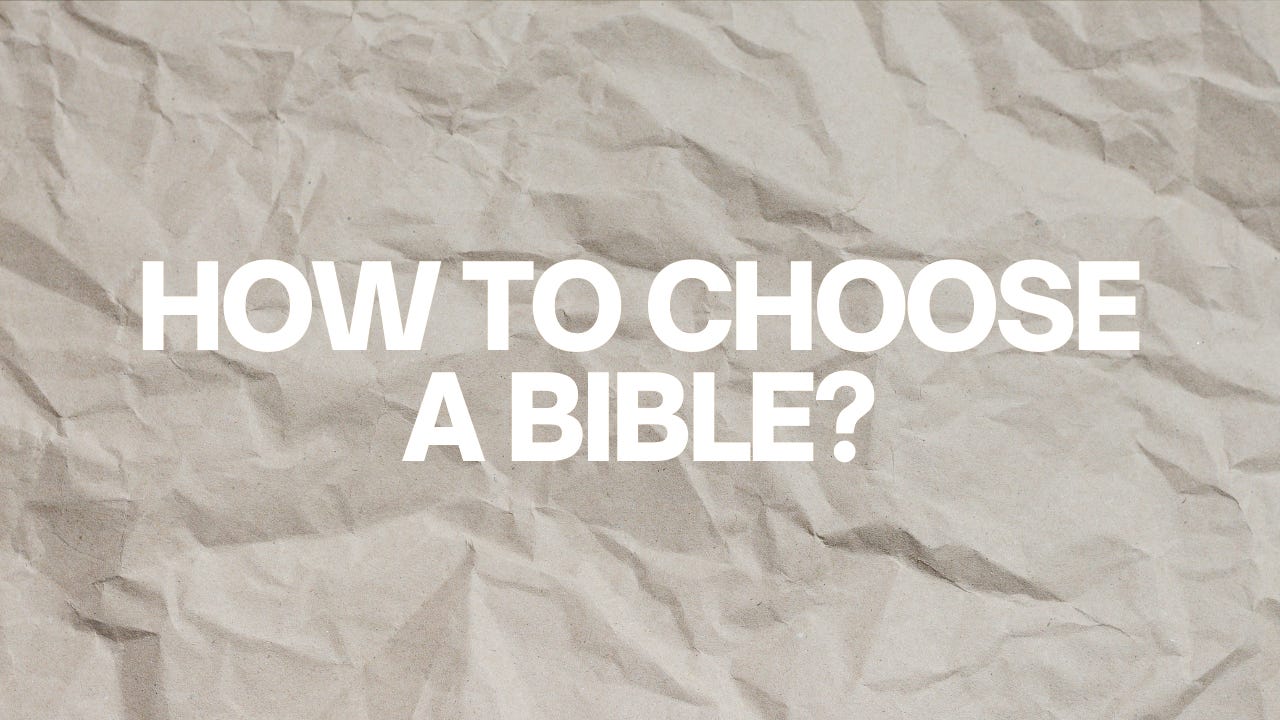Hello friend! Welcome to The Other World! I am so excited to have you here! Today I am kicking off a Bible 101 blog post series here on Substack. Here I want to share helpful tips and resources to help you on your Bible reading journey.
My heart is for you to fall in love with the Bible and spend time with Jesus! I want you to know that the Bible is the TRUTH. I want you to seek out God’s word for yourself. Read the Bible—not just a verse but the WHOLE THING.
“What Bible translation should I read? What even are Bible translations?”
What Are Bible Translations?
The Bible was originally written in three different languages: Hebrew, Aramaic, and Greek.
For us to read it in our own native language the Bible has to be translated from the original lounge and text into our language. For English speakers, the Bible was first translated in the late 14th century though it was not widely distributed at the time.
In the early 16th century William Tynsdale began translating the Bible—specifically the New Testament—into English. He believed that all Christians should have access to the Bible and be able to read it in their own language. This was illegal in England at the time and was punishable by death if you were caught distributing these Bibles. Tynsdale became a Bible smuggler. He was later betrayed, imprisoned and martyred for his faith and for translating the Bible into English. It is said that his final words were a prayer for the King of England's eyes to be opened. Years later his prayer would become true under the reign of King Henry VII who allowed there to be Bibles in English. Tynsdale’s work would also lead to the creation of the King James Bible.
How to choose a Bible translations
In the 21st century, we have many Bible translations available for us to read. What Bible translation should we choose? What is the difference?
The Bible is translated with two main thoughts in mind: keeping the text word-for-word or thought-for-thought. Bibles usually land on a spectrum with some being more literal in the translation of words or more conceptual and big ideas.
Below is a graphic showing an example of where some Bible translations fall on the spectrum. Some are more word-for-word, some are more thought-for-thought, and others are more in the middle. You can choose what is best for you and your study time.
I personally use and recommend reading the New King James Version (NKJV), the English Standard Bible (ESV), and the New Living Translation (NLT). These are my personal favorites and the ones I go back to again and again!
The only Bible translations I would caution against are the paraphrasing Bibles that in a sense “retell” scripture. These ones can end up adding things that may not actually be in the Bible or taking out things that are in the Bible. We want to know the entirety of God’s word, not only parts or retellings.
I hope this helps you in finding a Bible to read!
Your sister in Christ, Moriyah









